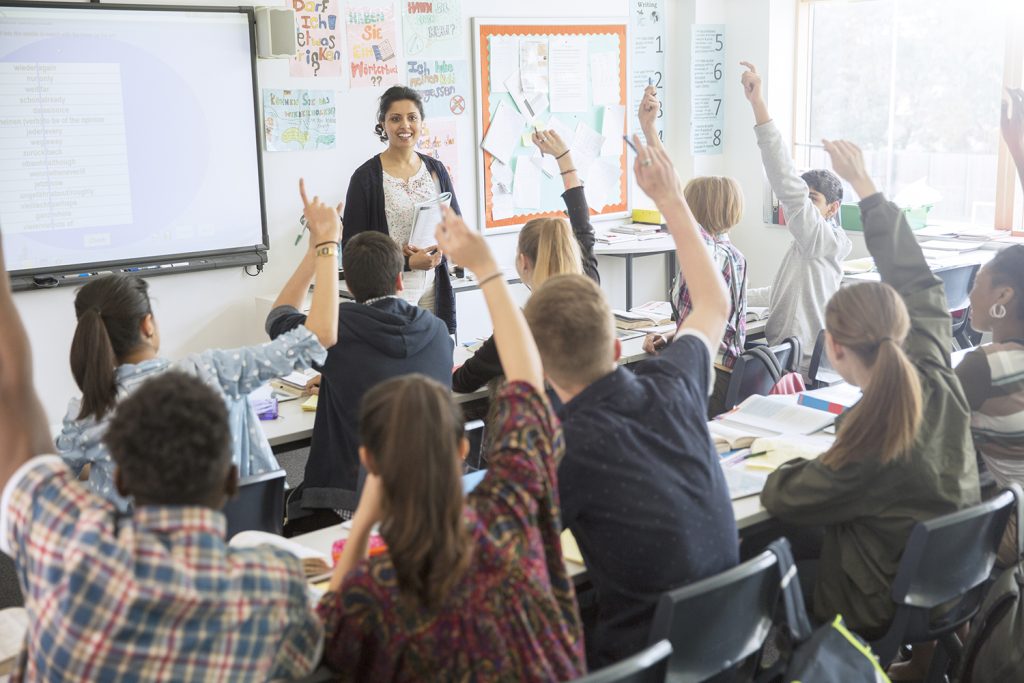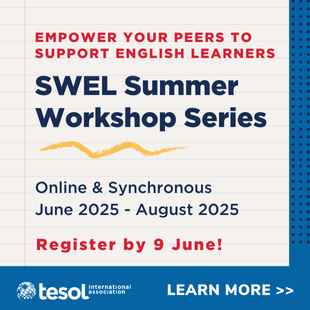

You know it when you see it” is an axiom that has been applied to rigorous educational experiences. And there is truth to this sentiment. When the classroom is humming along and teachers and students have high expectations for learning, combined with the support to achieve greatness, rigor seems self-evident. It’s obvious that learning will occur when rigor is present and that students’ content and language development will be accelerated.
Yet the issue of rigor is especially problematic when it comes to multilingual learners (MLs). Evidence suggests that teachers lower the rigor threshold for these students, a process some researchers view as a major contributor to the achievement gap between MLs and their general education peers (Reeves, 2006). A study of teachers’ beliefs about curriculum rigor for MLs compared to general education students was troubling (Murphy and Torff, 2019). Participants were presented with activities that varied in critical thinking (CT), such as A science class is studying plant growth. The teacher presents the results of a flawed plant experiment and asks students to determine what’s wrong with it (high CT) and A science class is studying the human circulatory system. The teacher shows a video on the circulatory system and then reviews the new vocabulary it introduced (low CT; p. 94). The findings revealed that teachers generally favor less rigorous, lower critical-thinking activities for MLs, believing these learners are less prepared for high-CT tasks. Interestingly, teacher demographics, such as educational attainment or experience, did not significantly influence these beliefs, highlighting a systemic issue in perceptions of MLs’ capabilities.
Rigor Defined
What does rigor mean? Baylor University defines academic rigor as “creating an environment in which each student is expected to learn at high levels, each student is supported so he or she can learn at high levels, and each student demonstrates learning at high levels” (https://nse.web.baylor.edu/instructor-resources). They note that there are several aspects to academic rigor, including:
Rigorous learning experiences that build students’ knowledge and skills. These learning experiences should be aligned with grade-level content expectations and include instructional support for students to experience success.
Rigorous assignments that require students to think deeply rather than just superficially memorize information. These assignments develop students’ critical and creative thinking rather than focus only on recall of information.
Rigorous learning environments that invite students into learning and help students see value in what they are learning. These environments should ensure that students develop a sense of belonging, while being safe places for students to take risks.
Rigorous learning opportunities that push students to learn beyond what is described in the standards and curriculum. These opportunities provide students with the chance to see connections between what they are learning and the world outside their classroom and to recognize that they overcome challenges, developing their efficacy.
Designing Rigorous Learning
But what are the ways in which teachers can plan for rigorous learning experiences? The lack of a clear or consistent answer to this question has thwarted well-meaning educators from ensuring that high expectations are realized in every lesson, in every class, and every day. Charged by the promise of rigorous learning environments but challenged by the lack of definition, we identified an initial complement of factors that were observable aspects of rigor in the classroom. We theorized that these factors might help teachers design the learning environment and experiences. We posted these initially defined factors on various social media sites and asked the metaverse to comment. We narrowed and refined the indicators, eventually sharing them with over 400 educators who commented on the specifics and the language used to describe specific aspects of rigor. We organized the top 25 indicators into the following categories, which comprise the RIGOR Walk model:
R: Relationships
I: Instruction
G: Goals
O: Organization
R: Relevance

As an example of the ways in which educators can talk about rigor, we offer the following video of a dual language middle school classroom for your observation:
Using the RIGOR indicators, consider the goals that this teacher has for students. Note the ways in which relevance is established. Attend to the academic language and vocabulary. Focus on the scaffolds that are implemented. Also note the peer interactions.
Rigor and Multilingual Learners
Although these indicators apply to all students, we’ll focus on some of the indicators that specifically and purposefully address the learning needs of MLs. Rigorous learning requires that educators attend to students’ identities, lived experiences, prior knowledge, and interests. In addition, rigorous learning demands that educators make lessons culturally relevant and inclusive. This should be a given in any class but is profoundly important in classrooms in which MLs are supported to grow and develop.
Further, it should be obvious that teachers know students’ names and how to pronounce them. Unfortunately, this is not always the case. One study showed that 52% of students say that their teachers do not know their names (Quaglia, 2014). It should also be obvious that teachers need to move around the room and be in reasonable proximity to all students. Interestingly, there is evidence that teachers tend to avoid closer contact with students who are not achieving well and that changing that can have a positive impact on student behavior and learning (Los Angeles County Office of Education, 2000).
What may be less obvious are the ways in which scaffolds are used to ensure rigor. Our indicator suggests that scaffolds be used strategically and that they ensure productive success. In other words, teachers should avoid over-scaffolding to the point that cognitive challenges are reduced while, at the same time, realizing that scaffolds ensure that students experience productive success. There should be a Goldilocks tension in every classroom between too much and too little scaffolding. We should work to fade the scaffolds as soon as possible and then reenact them when new learning is introduced to students.
The aspect of productive success is important. Students need to experience many successes each and every day. Although it is true that we can learn from failure and mistakes, it’s not very fun; failure does not activate the reward pathway in the brain. This part of our brain is key to motivation, which is fed by success rather than failure. Rigor requires that educators ensure that students experience productive success and then increase the complexity and difficulty of the experience.
The ratio of failure to success also influences students’ willingness to engage in academic risk-taking (Clifford et al., 1990), which is another aspect of rigor. Based on their experiences with success and failure, students become motivated (or not) to take academic risks, which require that they understand that they might be wrong. Consider, for instance, the two types of activities that were presented to teachers in the study by Murphy and Torff (2019). The critical thinking required to analyze a flawed science experiment to identify methodological errors requires far more academic risk-taking than the more passive experience of watching a science video. The former requires that students speculate using reasoning and argumentation. The latter requires compliant behavior and a modicum of attention. To foster academic risk-taking, teachers should:
- provide regular opportunities for students to relearn, revise, and redo assignments or assessments
- recognize effort and not only correctness
- celebrate mistakes as temporary and not reflective of the student, but rather the situation
- teach students to ask questions of themselves, their peers, and the teacher
Importantly, academic risk-taking grows when there are strong teacher–student relationships. If students worry that they will be embarrassed, humiliated, or shamed when they make a mistake, or that their relationship with the teachers (and perhaps peers) is contingent on getting right answers, academic risk-taking will be reduced. When students feel safe, valued, and respected, their willingness to take an academic risk, put themselves out there, and share their thinking (perhaps with errors in word choice, grammar, or pronunciation) grows and directly impacts their overall learning.
Conclusion
Rigor is not for some students; it’s for all students. When teachers design meaningful learning experiences, aligned with content and ELD standards, and ensure that student learning is scaffolded, rigor becomes palpable and obvious in the classroom. We found that these 25 indicators are good for reflection and useful in planning. They can guide instructional decisions and actions that ensure all students learn at high levels.
References
Clifford, M. M., Chou, F. C., Mao, K., Lan, W. Y., and Kou, S. (1990). “Academic Risk Taking, Development, and External Constraint.” Journal of Experimental Education, 59(1), 45–64.
Los Angeles County Office of Education. (2000). Teacher Expectations and Student Achievement.
Murphy, A. F., and Torff, B. (2019). “Teachers’ Beliefs about Rigor of Curriculum for English Language Learners.” Educational Forum, 83(1), 90–101.
Quaglia, R. (2014). Student Voice: The Instrument of Change. Corwin.
Reeves, J. (2006). “Secondary Teacher Attitudes towards Including English-Language Learners in Mainstream Classrooms.” Journal of Educational Research, 99(3), 131–143.
Douglas Fisher is professor and chair of educational leadership at San Diego State University and a leader at Health Sciences High and Middle College. Previously, Doug was an early intervention teacher and elementary school educator. He is a credentialed teacher and leader in California. In 2022, he was inducted into the Reading Hall of Fame by the Literacy Research Association. He has published widely on literacy, quality instruction, and assessment, as well as books such as Welcome to Teaching, PLC+, Teaching Students to Drive their Learning, and Student Assessment: Better Evidence, Better Decisions, Better Learning.
Nancy Frey is professor of educational leadership at San Diego State University and a leader at Health Sciences High and Middle College.
Previously, Nancy was a teacher, academic coach, and central office resource coordinator in Florida. She is a credentialed special educator, reading specialist, and administrator in California. She is a member of the International Literacy Association’s Literacy Research Panel and has published widely, including books such as Welcome to Teaching, PLC+, Teaching Students to Drive their Learning, and Student Assessment: Better Evidence, Better Decisions,
Better Learning.
James Marshall is a professor of educational leadership at San Diego State University where he also leads the Doctorate in Educational Leadership program. A credentialed teacher, he began his career as an informal science educator at the San Diego Zoo. Jim’s passion centers on the design of learning programs that yield predictable results. He has published broadly on needs assessment, learning initiative design, implementation, and evaluation. His published books include Right From the Start: The Essential Guide to Implementing School Initiatives and Fixing Education Initiatives in Crisis: 24 Go-To Strategies.






